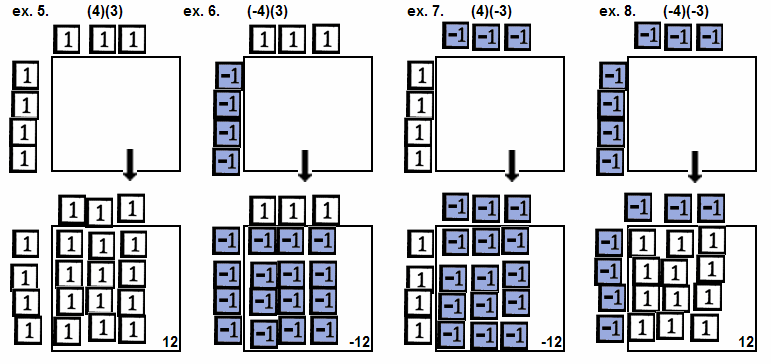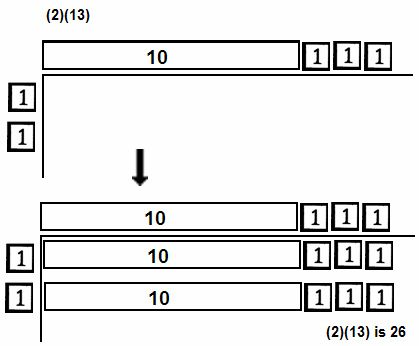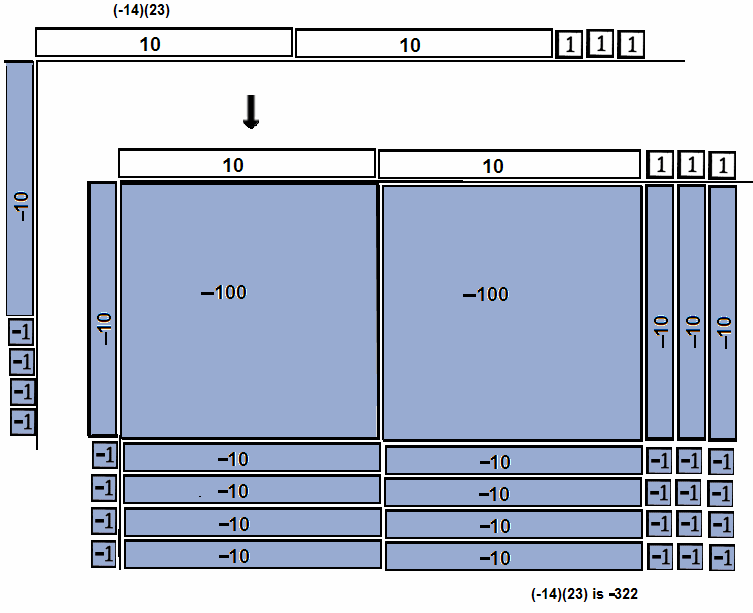To multiply by a negative, change the sign and multiply the size.
To multiply by a positive multiply the size. |

- Multiply.
| 1st: | Use a blank rectangular sheet of paper to separate the storage
region from the display area and to create a border for the rectangular area created. |
| 2nd: | Represent one factor (usually the fist) vertically in the storage
on the left edge of the display area. The factor acts as a measure of the length of the side. |
| 3rd: | Represent the other factor horizontally in the storage on the top edge of the display area. The factor acts as a measure of the length of the side. |
| 4th: | Multiply a top tile by a side tile filling in the corresponding region
of the display area with the required tile. These tiles represent the product and the area of the region. |
| 5th: | The product is produced in the display area.
|

Two-Digit Multiplication
ex. 9. Multiply.
 |
In the basic set of Term Tiles, a 10-tile is not included. If it were, this is what the
multiplication fo 2 times 13 would look like.
Two-digit multiplication is included here because it foreshadows algebraic
multiplication involving binomials and other polynomials. |
ex. 10. Multiply.
 |
In the basic set of Term Tiles, a 10-tile, -10-tile, 100-tile and -100-tile
do not exist. If these tiles were included this is what the representaion and product
would look like. It is NOT necessary to use tiles -- a graphic is sufficient. |
To divide by a negative, change the sign and divided as usual.
To divide by a positive, divide as usual. |

- Divide.
| 1st: | Use a blank rectangular sheet of paper to separate the storage
region from the display area and to create a border for the rectangular area created. |
| 2nd: | Represent the divisor vertically in storage on the left edge
of the display area. |
| 3rd: | Begin with the terms (tiles) of highest degree placing tiles in
the upper left corner first. |
| 4th: | Represent the dividend in rows in the display area matching
the divisor. The remainder will, of course, be extra. |
| 5th: | Represent the appropriate quotient horizontally in the storage
area as dictated by the dividend. |
| 6th: | Read the quotient and the remainder.
|




|




